TSUKUBA FUTURE
#015 From Destruction to Creation: Designing Structures with Strong Shock-Resistance
Professor ISOBE Daigoro Isobe, Faculty of Engineering, Information and Systems

Japanese buildings are known for their excellent seismic resistance, but unforeseen damage can occur as a result of the complicated interaction of multiple factors when a major earthquake actually strikes. For example, in some places in Tokyo, there is only a gap of a foot or two between buildings. If the heights or strength of neighboring buildings differ, the frequencies of their vibrations may differ causing them to crash into and damage one another. Seismic resistance design takes into account an individual building's strength against the shaking caused by earthquake, but does not take into account any shock caused by large objects crashing into the building. Likewise, design guidelines for tsunami impacts have yet to be developed that adequately address the issues of buoyancy effects and floating wreckage. The Great East Japan Earthquake helped researchers visualize how objects crash into buildings, and emphasis has been placed on designing collapse-resistant buildings that withstand these impacts.
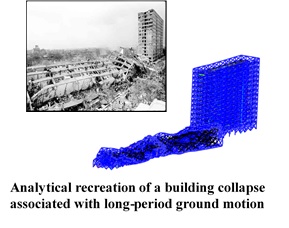
Designing a collapse-resistant building requires an understanding of the relationship between the conditions and types of shocks under which it might collapse, and the mechanisms of collapse. However, buildings do not usually collapse on a daily basis, and it is difficult to conduct real world destruction experiments. This is where simulation technologies come into play. Prof. Isobe uses a method known as the finite element method to simulate the movements that occur when a building collapses due to various forces and impacts, and to analyze the mechanisms involved. He has also conducted simulations of the collapse of the World Trade Center towers caused by the terrorist attacks that took place in the US on September 11, 2001. The fires that broke out on the upper floors of the towers were the initial cause of damage, but it is unlikely that the entirety of these buildings would have been destroyed with the speed that they were as a result of fire-induced damage alone. When the simulation results were analyzed, researchers were able to estimate the way the shock waves that passed through each tower when the airplanes crashed into them. The shock waves caused the junctions of the beams supporting the floors to come apart, and the load that had been borne by the core columns running throughout the towers to suddenly disappear. In reaction to this, it is postulated that the core columns were pulled in a vertical (perpendicular) direction, causing the building to be quickly destroyed in a chain reaction event. Because buildings are never designed to withstand a force that pulls them in a vertical direction, the beam joints were weakly structured against a vertical force. This was how the entire building collapsed in a matter of seconds. As the details became clear, building standards in the US changed and construction methods have been adopted wherein columns are divided into sections such that shocks cannot be transmitted throughout a structure.
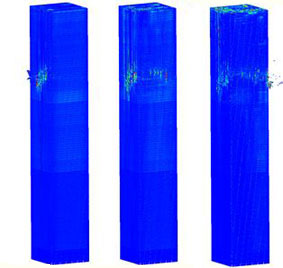
impact at the WTC
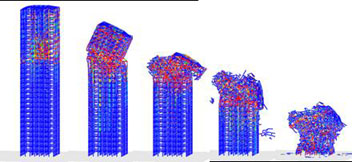
Simulation of the fire-induced collapse of a high-rise building
Many simulations of the collapse of the World Trade Center towers have been conducted, but only Prof. Isobe has conducted a simulation based on a model of one entire tower to demonstrate the impact of the shock wave. This work has attracted worldwide attention. In fact, it was the collapse simulation technologies developed by Prof. Isobe using the finite element method that made it possible to analyze the propagation of the shock wave. The finite element method divides objects with complex shapes and properties into simple shapes, replaces each element with a simple model, then reconfigures these to predict the behavior of the whole. This method was first introduced in Japan in the field of marine engineering--the field in which Prof. Isobe first had his start. Japanese simulation technologies were developed out of the design and flow analysis of ship structures, such as tankers and battleships. Because this method offers high versatility and programming simplicity, efforts are being made to use this method in designing robots that move more quickly and smoothly. This simulation technology also makes it possible to model the collapse of a building due to blast demolition. Prof. Isobe is conducting research in this area, and has worked as an advisor in the creation of computer-generated images depicting simulated blast demolition of extant buildings for a film.
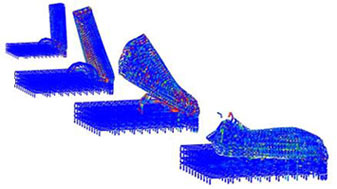
Simulation of the blast demolition of a high-rise hotelSimulation of aircraft
Research on simulation technologies is undeniably promoted after the fact when an accident or disaster occurs. However, simulations facilitate the acquisition of knowledge related to the balance of strength within structures and structural designs that help dissipate the forces that are applied to buildings. The accumulation of such knowledge is what leads to design guidelines for buildings that are safer and highly resistant to disasters.

Blast demolition system using an electromagnetic device
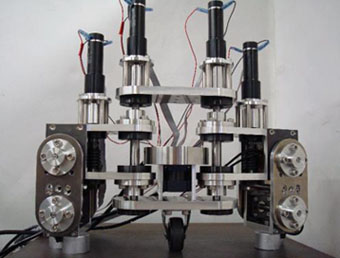
Walking robot equipped with a torque canceling system
Article by Science Communicator at the Office of Public Relations


